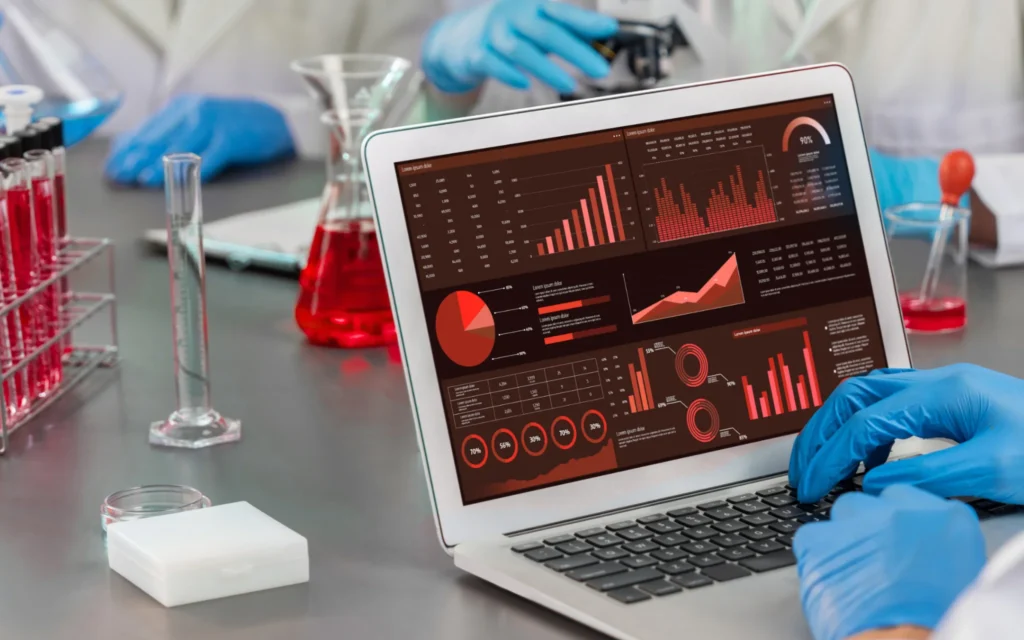Emulator Vs. Simulator: A Guide For Software Testing

April 25, 2025 11 min read
Emulator vs. Simulator
Decoding the differences: emulators and simulators in software testing.
It is customary to hear people chatting about simulators and emulators in the software testing community as if they are the same. One can easily understand such confusion – while both tools serve the same purpose, the difference between an emulator and a simulator is irrelevant from the perspective of a regular testing engineer.
Nevertheless, the facts remain: emulation and simulation are distinct concepts that imply specific attitudes. If you want to use each software testing tool fully, it is essential to recognize its unique nature. Please continue reading to find an emulator vs. simulator comparison and learn to choose between them.
What is an Emulator?
In computing science, an emulator means software that allows one computer operating system’s internal behavior to imitate the behavior of another computer system. The imitating system is called a host, while the copied system is named the guest. The imitation is made by translating the Instruction Set Architecture of the guest device through binary translation.
The emulation theory was developed during the 1960-s by engineers of IBM. The first emulator was written in 1965, allowing IBM’s clients to run old applications on upgraded hardware. A significant step forward in emulation development happened in 1989 when engineers found a way of writing the content of a ROM chip into the file.
The file could be read through an emulator without a physical chip. During the 1990-s, emulators became popular among the gaming community that sought instruments to play old and forgotten console games on the newest PCs. The proliferation of tablets and smartphones increased the interest in emulators since many people wanted to run Android or iOS applications on their desktop computers.
Modern emulators can replicate different elements of a computer system, such as hardware, computer programs, operation system, architecture, central processors, etc. The emulation is usually created to run the software, peripheral devices, tools, and other components which are meant to run in the guest system. Well-crafted emulation provides users with the same experience as if they were working with the original guest operating system.
Emulators are usually assembled of three units:
- CPU emulator (the most complex part)
- Memory sub-system emulator
- Different input/output device emulators
So why do we need emulation in software testing? As a rule, computer programs are platform-specific. Separate versions of applications for Windows, Linux, Mac, Android, iOS, etc., are created. Individual tests per target device are required to ensure the application performs well in different environments. Emulation allows running tests on the same computer without buying individual Windows, Android, and Mac devices.
Many open-source and commercial emulators are built for different OSes on the market. Here are just some examples:
- Android emulator that allows running Android apps on Windows
- WINE to run Windows software on Linux
- Nestopia to play Nintendo games on different desktop OSes
- Appetize.io for running mobile-native apps in the web browser.
Although an emulator is an excellent tool for cross-platform testing, the price of such universality is high consumption of computing resources. As a rule, emulated programs require better hardware than the original software. Moreover, the binary translation makes emulators slower due to latency.
What is a Simulator?
Like an emulator, the simulator models the software environment where the product will function. However, the simulator can imitate only the software variables and configurations. Because they create only software environments, they can be implemented using high-level programming languages. No binary translation is required.
The main goal of a simulator is to model the interaction of real humans with the product, how they will perceive the product, and control it. Those interactions might be buttons, turning the screen, or minimizing the window. The purpose of such modeling is to analyze, study, and research. Simulators can’t substitute the real device. Since simulators don’t mimic the hardware of real mobile devices, they can’t be used for testing such functionalities as battery usage, cellular interrupts, memory usage, camera performance, CPU overload, etc.
A significant advantage of simulators is their low consumption of resources. Since simulators mimic only certain features of the real device, there is no need for complicated computing. With the lesser expenditure of resources, simulation allows running more tests in the same period than emulation. Simulation is just enough if you are testing an application with simple hardware and software features only.
Simulator vs. Emulator: What is the Difference?
Despite simulators and emulators mimicking real objects, they differ in how they cope and copy. An emulator replaces the device for actual use. A simulator is a theoretical model for research and testing hypotheses. If a car-driving simulator could carry you from one place to another, it would be a car-driving real and virtual devices emulator. In such a way, the difference between simulation and emulation is in the replica’s precision. Emulated environments feel more real than simulated.

When to Use Simulators?
If you have just started developing software and are still determining which mobile devices it will run on but still want to test it, simulators are precisely what you need. They consume much fewer resources than emulators or real devices and allow receiving the first results very quickly.
The other scenario is when you need to check how the application interacts with the hardware configurations in the external environment. For example, you may need to examine whether an app sends data to another software. A simulated environment is enough since underlying hardware usually doesn’t affect the data transaction. Similarly, simulated environments are fine if you want to ensure that UI displays correctly under different screen resolutions.
Simulators are sometimes used because they are the only possible option. For example, iOS phones are hard to emulate, and applying the mobile device to the iOS Simulator is the only way to test the app without purchasing a physical phone.
When to Use Emulators?
The most significant benefit from applying emulators testers receive while checking how the software interacts with the actual hardware or a combination of hardware and OS—for example, testing an application like Snapchat that uses such hardware components as a camera, GPS, microphone, and headphones. Nevertheless, remember: not all hardware units can be emulated.
A critical use case of emulators is continuous integration testing. Agile development methodologies motivate engineers to test more during the beginning stages of production cycles. With early testing, developers receive valuable feedback from the users at the start of a project and have more time to adjust changes. New automation tests designed for emulators allow testing parallel to the development process.
The other reason to use emulators instead of simulators is the debugging possibilities. Modern emulators usually come with additional features that allow measuring CPU load, memory consumption, network load, etc. With emulators, you can immediately dive into code, databases, and file structures and inspect all the nuances you want. Such kind of task can be performed only with emulators.
Advantages of Simulators and Emulators
Both simulators and emulators are cost-effective tools for testing application performance. Unlike trials with physical devices, simulators, and emulators do not require significant investments in the infrastructure. No extra expenses on purchase charges, maintenance, management, and upgrades. All you need to start testing is the computer that runs the relevant software and the URL for the app. Cloud emulation and simulation services that can be launched on-demand exist as well.
Easy deployment of virtual testing devices and facilities is essential for projects with tough deadlines, frequent updates, or unexpected events. With simulators and emulators, you can quickly increase the number of tests performed and shorten the time of the testing stage. Moreover, you can test in parallel, making the whole production process lean and agile. By being virtual devices, emulators and simulators are more convenient for test automation than physical devices, saving costs and time.
Disadvantages of Simulator and Emulators
Since both the simulator and emulator are copies of an object and not the real device, the results of the tests might need to be more accurate. Even the closest imitation of mobile device hardware replicates only some of the features of the original. False-positive and false-negative results may appear.
Due to the virtual nature of simulators and emulators, some features can’t be tested with real device testing those tools:
- Battery Performance. Since batteries are non-ideal energy sources, it’s hard to precisely model the dynamic battery current drain.
- CPU Performance. Although emulators can copy some parameters, the model must be more accurate. The real-life devices appear to perform slower than emulated.
- Memory Consumption. The same as with CPU-emulated and simulated environments have a much greater memory capacity than the physical devices.
- Quality of the Video and Sound. The hardware parameters are more critical in providing a quality data stream than the software.
- Connectivity Issues. Since emulators and simulators aren’t connected to the actual network, the modeling doesn’t reproduce the same conditions precisely. Such situations are not covered when the device changes the Wi-Fi network, has an unstable Bluetooth connection, or receives a notification or a phone call.
- Compatibility With Other Applications. Since it’s hard to predict what kind of apps will run simultaneously with your product on the same device, possible conflict may not be noticed.
- Color Display. Simulators and emulators fail to display the same colors as the original screens of the devices. With a proper presentation of color and brightness, it is easier to understand how the end users will perceive the UI.
Finding reliable software is a significant challenge in applying emulators and simulators for mobile testing. Some software development companies introduce non-standard features which can’t be replicated because of the copyright. Moreover, most emulators and simulator vendors must catch up with the updates. This results in lagging and errors while testing.
Simulate or Emulate?
So, simulator vs. emulator, what is better? The answer is: neither is perfect; you need them both. Use simulators at the very beginning of your mobile app development project. It is suitable for native development and initial prototyping when you need to get a general idea of how your application runs. Good simulation helps identify the key variables that interrupt application performance and provides insights on how to enhance the productivity of a product. It is also helpful to demonstrate application functionality before the investors and stakeholders.
Simulators are cheap in terms of the computing resources consumed and the time spent on the deployment of virtual environments. Cloud on-demand services allow the running of tests without significant investments into physical infrastructure, which reduces waste.
As your project moves forward, you need to verify how the application compiles with different types of hardware and other internal systems. Now it’s time to apply emulators. Virtual copies of the physical devices and emulators provide the closest to the device manufacturers’ original user experience possible. With emulators, you can check if the software works properly with different operational systems, central processors, network units, etc.
Final Remark
At the final stage of the development process, you will need trials with real devices. Although simulators and emulators are valuable tools for the early stages of a project, they can only substitute the physical device in full. Such hardware elements as the battery, screen, proximity sensor, touchpad, and Touch ID are hard to simulate or emulate in a virtual device. You still need a physical device to test battery performance, color, and brightness of the screen, compatibility with other applications, or network stability. The spending on physical testing may be reduced by outsourcing the task.
While dealing with both emulators and simulators can be daunting, it does not mean you need to undergo all the pitfalls of the process. In any case, this is true when you have an experienced software development vendor on board, one with expertise in working with virtual devices and real devices alike.
Contact us to start productive cooperation and deal with emulators and simulators in any given scenario.



